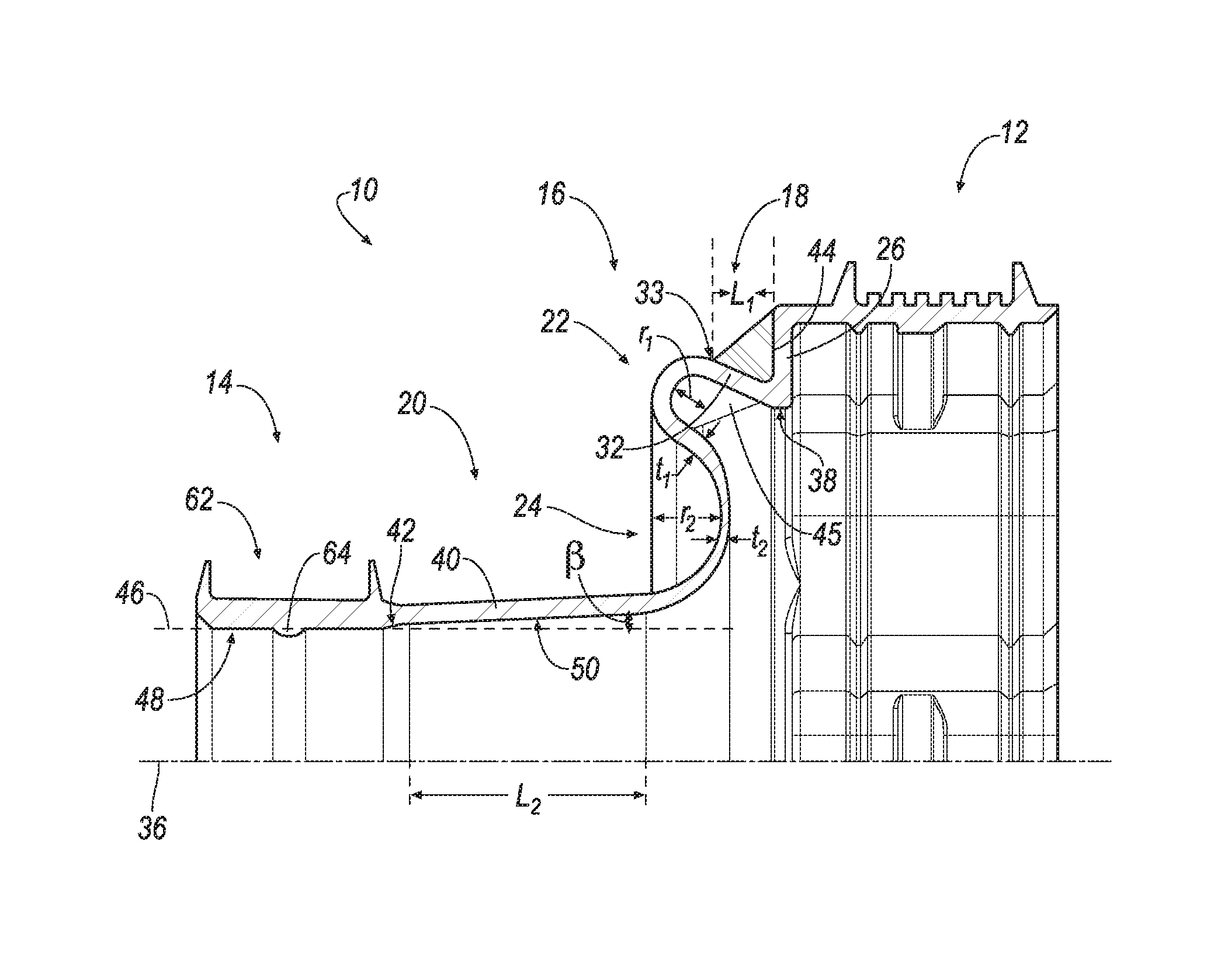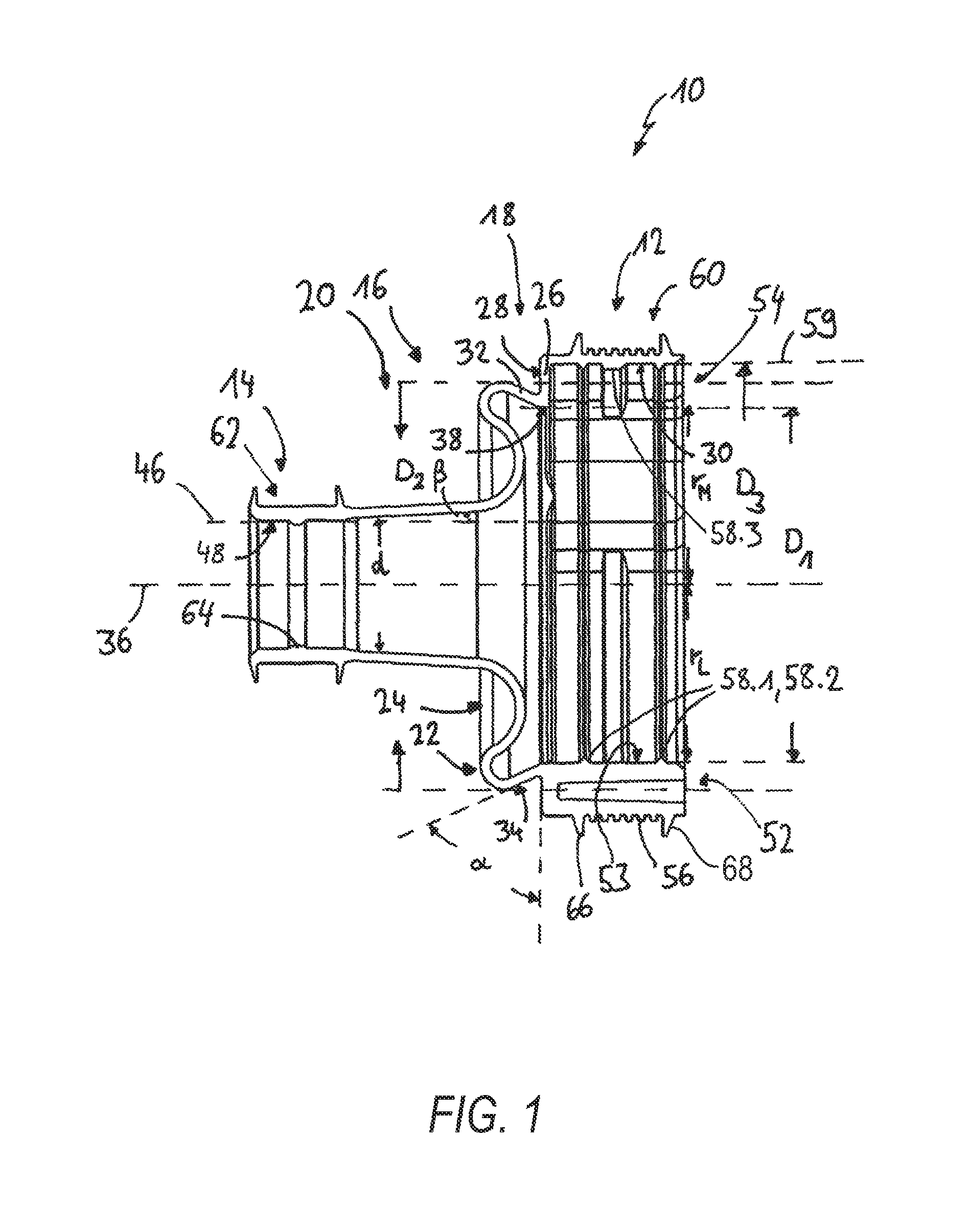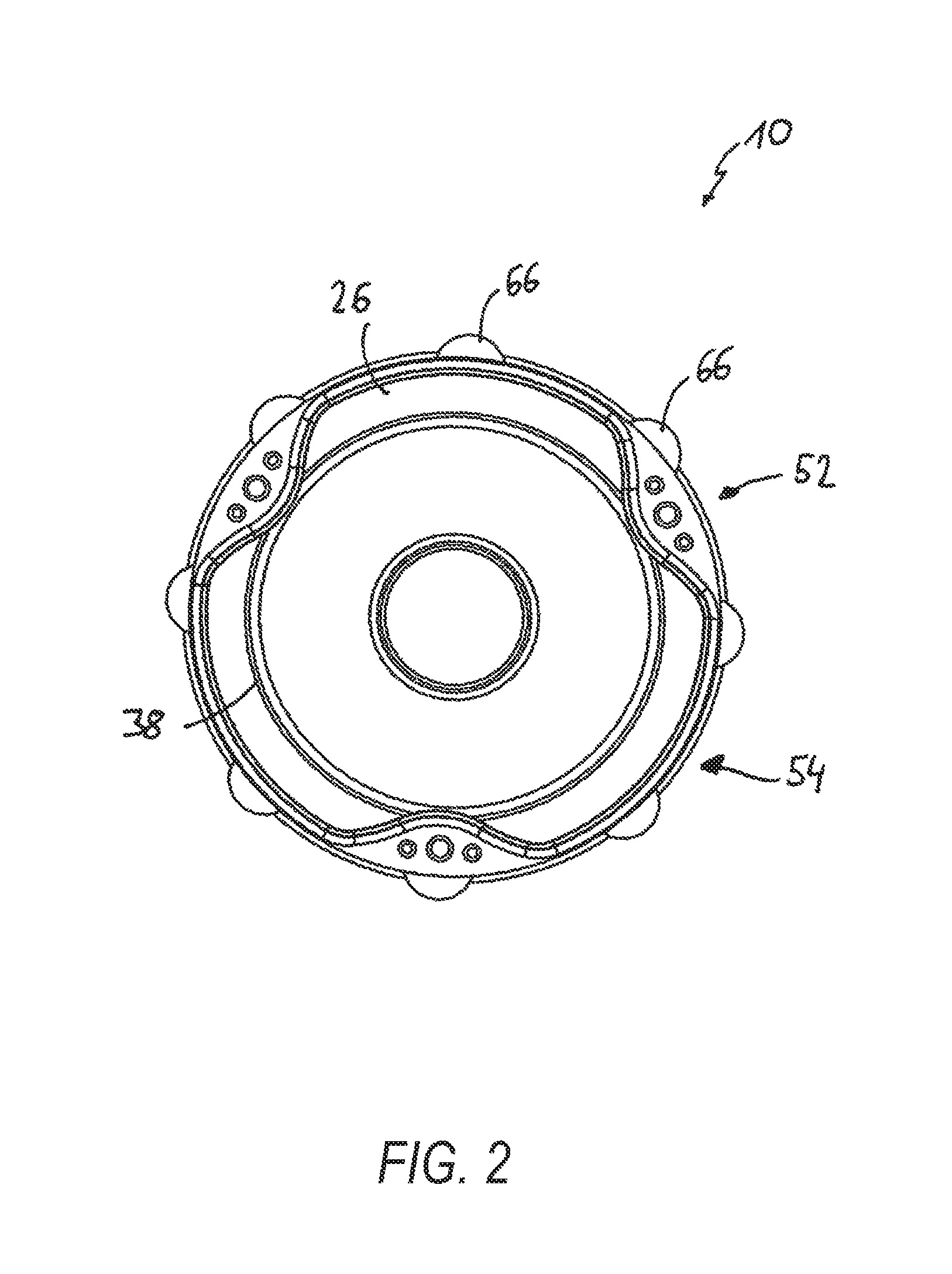Rolling boot with transition region
a transition region and rolling boot technology, applied in the direction of yielding couplings, mechanical equipment, rotary machine parts, etc., can solve the problems of a1 reducing the stability of rolling boots in use, and achieve the effect of increasing form stability, increasing form stability, and preventing the disassembly of inner parts of joints
- Summary
- Abstract
- Description
- Claims
- Application Information
AI Technical Summary
Benefits of technology
Problems solved by technology
Method used
Image
Examples
first embodiment
[0067]Referring now to the drawings where alike reference numerals are used to identify identical components in the various views, FIG. 1 illustrates a sectional view along a longitudinal main axis 36 of a rolling boot 10. Said rolling boot 10 comprises a first fastening region 12 for fixing the boot 10 to a joint casing (not shown), and a second fastening region 14 for fastening the boot 10 to the shaft (not shown). When the mounting boot 10 via the first fastening region 12 and the second fastening region 14 on a joint casing and shaft, respectively, binder elements, especially tensioning elements, are used.
[0068]The first fastening region 12 provides for a binder seat region 60, in which the binder element, especially tensioning element, may be placed. On the outside of said binder seat region 60, outer ribs 56 are located, providing for a binder seat surface, having all identical shape, e.g., a square-like shape in the longitudinal section as shown in FIG. 1. On the other side o...
third embodiment
[0082]FIG. 4 shows a joint arrangement in part in accordance with a third embodiment, including a shaft 74 being mounted in a joint arrangement 72 with a plunge joint 70 with a casing 82, and a boot 10. No binder element for fixing the boot 10 on the plunge joint 70 is shown in FIG. 4. Boot 10 is not mounted under tension. It can be seen that the bottom 38 of first flange 26 of the first transition region protrudes the front edge of the plunge joint 70 in the un-lobe regions 54, whereas no such protuberance are present in the lobe regions 52.
[0083]FIG. 5 is an axial force-plunge path-diagram of the boot, showing two different ranges of operation, namely a first range of operation A where a movement of about 25 mm only leads to a small increase of the axial force, whereas in a second range of operation B, a drastic increase of the axial force over a length of less than 7 mm occurs. In the second range of operation, the boot is fully extended at the end. In this position, the boot is ...
fourth embodiment
[0085]FIG. 7 shows a joint arrangement in accordance with a fourth embodiment, showing a shaft 74 assembled with two tripode plunge joints 70.1 and 70.2. Rolling boots 10.1 and 10.2 are mounted without any tension on joint casings 82.1 and 82.2, respectively. Axial movement and retention force is, thus, distributed in an essentially equal way on each of the rolling boots 10.1, and 10.2, respectively. The shaft 74 is axially centered within the plunge joints 70.1 and 70.2 due to the high retention forces imparted by boots 10.1 and 10.2, respectively.
PUM
 Login to View More
Login to View More Abstract
Description
Claims
Application Information
 Login to View More
Login to View More - R&D
- Intellectual Property
- Life Sciences
- Materials
- Tech Scout
- Unparalleled Data Quality
- Higher Quality Content
- 60% Fewer Hallucinations
Browse by: Latest US Patents, China's latest patents, Technical Efficacy Thesaurus, Application Domain, Technology Topic, Popular Technical Reports.
© 2025 PatSnap. All rights reserved.Legal|Privacy policy|Modern Slavery Act Transparency Statement|Sitemap|About US| Contact US: help@patsnap.com



